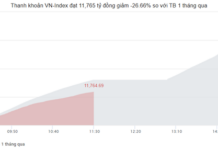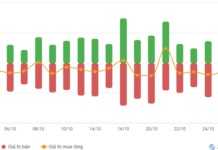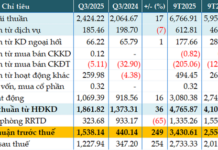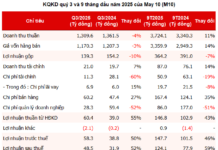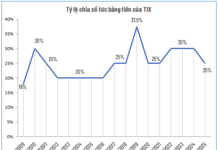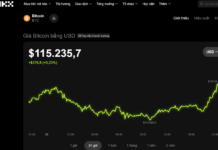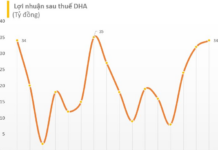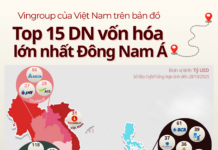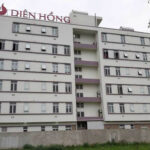“On my recent visit to the Central Geriatric Hospital in Hanoi, it was bustling with people. As the only specialized geriatric hospital in Hanoi and across Vietnam, a country of over 100 million people, it serves a critical role,” began economist Pham Chi Lan as she conversed with us.
This octogenarian woman shed light on the silent struggle of the elderly in Vietnam against illnesses. Citing United Nations statistics, she shared that, on average, individuals over 60 years of age contend with 2-3 health conditions, although, in reality, this number is much higher. The latter years of life, from 60 onwards, are marked by multiple co-existing ailments.
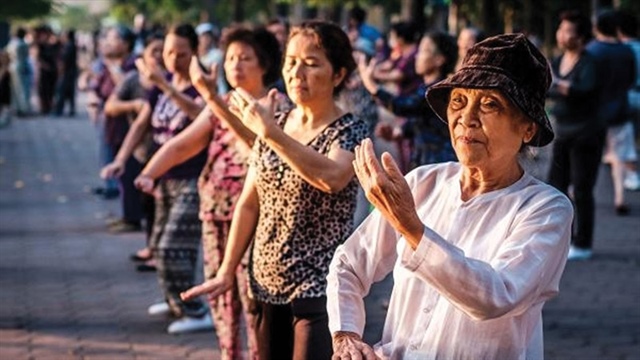 Morning exercise session in Hanoi, Vietnam. The country entered the aging phase in 2011 and will officially become an “aged society” by 2036. Photo: VGP |
At the National Geriatric Conference held in Hanoi last November, Nguyen Trung Anh, Director of the Central Geriatric Hospital and President of the Vietnam Geriatric Association, revealed that, on average, individuals over 60 years of age suffer from 3-4 diseases, and this number climbs to 7 after the age of 80. Common ailments include coronary artery disease, hypertension, stroke, diabetes, cancer, chronic obstructive pulmonary disease, joint degeneration, osteoporosis, and cognitive decline. These conditions necessitate lifelong treatment and, in some cases, specialized care.
Vietnamese people tend to neglect their health when they are young, only to be confronted by multiple health issues in their golden years, some of which may have been silently progressing for a decade. Dr. Nguyen Trung Anh highlighted that medical expenses and the burden of caring for the elderly are 7-10 times higher compared to younger individuals, and only about 60% of older adults in Vietnam have health insurance.
Emerging Needs: Retirement Homes and Care Services
Ms. Pham Chi Lan emphasized the concerning reality of “living long but not being very healthy,” noting that the prevalence of diseases among the elderly in Vietnam is higher than in many other countries. Currently, the capacity to provide healthcare services for older adults is limited, with a shortage of dedicated healthcare facilities (hospitals, medical centers, health stations) and caregivers (geriatricians, nurses, caregivers, etc.). Apart from the sole specialized geriatric hospital, only about 20% of provincial hospitals across Vietnam have dedicated departments or sections for elderly care.
While many older adults in Vietnam live with their children and grandchildren, the number of those living independently or alone is on the rise. A 2021 survey by Prudential Vietnam revealed that 85% of respondents expressed a desire to live independently in their later years. However, only 40% felt confident about their preparedness for solitary living in old age.
Another survey by Bao Viet Insurance Company (BVI) showed that, as of the end of 2021, Vietnam had approximately 80 senior care facilities. According to BVI, only 32 out of 63 provinces had retirement homes, mostly operated by the private sector. The government has set a target to have at least one retirement home in each province by 2025.
Ho Chi Minh City, the country’s largest metropolis, is home to over one million people aged 60 and above. The city currently has 20 facilities providing assistance and care for the elderly, including seven public and 13 non-public ones. Of the 13 non-public units, six offer free services thanks to donations from benefactors, while the rest charge fees. In early August 2024, the Tam An Retirement Home became the eighth licensed non-public facility in Ho Chi Minh City.
According to Le Van Thinh, Director of the Ho Chi Minh City Department of Labor, Invalids, and Social Affairs, the elderly in the seven public facilities receive free care, including meals, medical treatment, and clothing, in accordance with the Law on Older Persons 2009. The remaining facilities charge varying fees, starting from three million VND (approximately 123 USD) per person per month. In private institutions, costs can exceed ten million VND or even higher.
At the Hanoi conference, geriatric experts emphasized the need to develop a dedicated infrastructure for the elderly, including retirement homes, senior-friendly apartments, and geriatric medical centers. Additionally, they advocated for the expansion of home-based services such as housekeeping, grocery shopping, meal delivery, and in-home care and rehabilitation.
Alongside professional service companies that charge fees, several volunteer groups in Ho Chi Minh City have started initiatives where volunteers visit, converse with, and assist solitary older adults with simple tasks.
A Diverse Market
A decade ago, consumers lamented the scarcity of products tailored for the elderly, with foreign brands dominating the market.
“Perhaps, at that time, the demand from older adults wasn’t significant enough to attract the attention of businesses, leading to a lack of dedicated products. It was commonly believed that the elderly could use products intended for middle-aged individuals,” recalled Nguyen Thi Tuyet Mai, a representative of the Vietnam Textile and Apparel Association (VITAS), during our recent encounter.
While Ms. Mai’s observation specifically pertained to the textile industry, it also reflected the general mindset of that time. However, businesses soon recognized this emerging market’s potential, characterized by high demand and limited supply, with up to 90% of products being imported.
Between 2014 and 2016, Vietnamese enterprises began to focus on this demographic. Vinamilk and Nutifood started producing milk for the elderly and those with diabetes, osteoporosis, and other conditions. Saigon Food introduced nutritious porridge for older adults. Many companies also opened physical and online stores selling functional foods, medical equipment, and consumer goods.
However, even today, the elderly seem to be overlooked by brands.
Pham Ngoc Hung, an expert from the Association of High-Quality Vietnamese Goods Businesses, suggested categorizing individuals aged 55 and above into three groups based on their attitudes toward life. The first group, marked by illness and pessimism, is primarily concerned with their health. The second group dedicates their time and efforts to their children and grandchildren. The third group, embracing their “golden years,” views old age as a precious time to live life to the fullest. This third group has the highest spending power.
“They have assets or passive income sources, free from the responsibilities of children and grandchildren. They spend lavishly—often excessively—on functional foods, healthcare, travel, fashion, and any pleasure they may have been unable to afford in their younger years. Travel and fashion are two relatively untapped sectors. Older adults are wearing clothes that don’t cater to their unique needs and are buying tours that aren’t designed for them,” said Hung.
Since 2023, Tugo, a Ho Chi Minh City-based travel company, has been creating luxury tours specifically for older adults seeking indulgent experiences. Marketing director Dinh Hieu Nghia shared that these tours minimize shopping and allocate more time at each destination, allowing travelers to relax and savor their journey.
Currently, Tugo offers luxury tours for all markets it serves. However, the 30-year-old director considers individuals aged 40 and above as “elderly.” Many children have booked these luxury tours as gifts for their parents. “We will continue to develop and expand our products and services for older adults, with additional health-focused services,” added Nghia.
Thus, Vietnamese businesses have effectively lowered the age threshold for the elderly, from 60 to 55 and even 40, blending the senior and middle-aged markets to create a seamless continuum of products and services.
Mr. Hung noted that, as society ages and becomes more affluent, the market for goods and services catering to the elderly will occupy a significant portion of the economy, presenting numerous opportunities. “I advised a company specializing in varicose vein compression stockings, and they are now venturing into underwear. I also know of another business designing sportswear for older adults,” he shared.
Ricky Hồ
The Real Estate Giants: Tapping into the Booming Senior Living Market
The demand for senior healthcare services is experiencing a significant surge, both in volume and complexity, amidst a rapidly aging population. Recognizing this opportunity, real estate giants are swiftly moving to cater to this evolving market, positioning themselves to meet the unique needs of this demographic shift.

